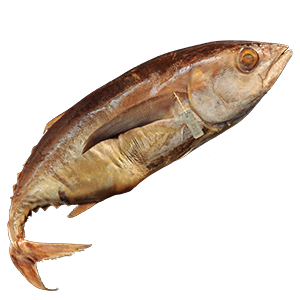“Fish,” he said, “I love you and respect you very much. But I will kill you dead before this day ends.”
― Ernest Hemingway, The Old Man and the Sea (1952)
 Though a more recent example of the hidden histories of food in scientific archives, Ernest Hemingway’s tuna distills several themes of early modern scientific collecting and consumption. In October 1934, the author sent this albacore tuna specimen, its body cavity filled with salt as a preservative, to the Academy of Natural Sciences in Philadelphia. With it, he included a culinary caveat, writing: “If you don’t want him as a specimen and he gets there in good shape wash the salt out, cut the meat off both sides of the back bone and broil it. Or cut the head off, make scores in the side of the fish and bake it.” Henry W. Fowler, an American ichthyologist and first curator of the Academy’s fish collection, responded to Hemingway’s letter with gratitude: “very glad to have this specimen.”
Though a more recent example of the hidden histories of food in scientific archives, Ernest Hemingway’s tuna distills several themes of early modern scientific collecting and consumption. In October 1934, the author sent this albacore tuna specimen, its body cavity filled with salt as a preservative, to the Academy of Natural Sciences in Philadelphia. With it, he included a culinary caveat, writing: “If you don’t want him as a specimen and he gets there in good shape wash the salt out, cut the meat off both sides of the back bone and broil it. Or cut the head off, make scores in the side of the fish and bake it.” Henry W. Fowler, an American ichthyologist and first curator of the Academy’s fish collection, responded to Hemingway’s letter with gratitude: “very glad to have this specimen.”